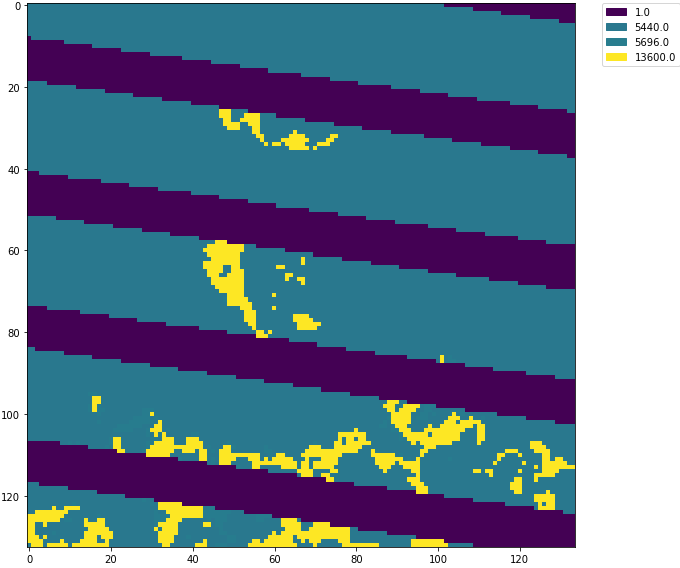Cloud cover calculation for subset of a Landsat scene #104
-
|
I would like to calculate the cloud cover over a subset of Landsat scenes. The I have tried digging into the Any recommendation on how to calculate a cloud cover percentage on a subset of an scene? With a little upfront guidance, I would be willing to draft a tutorial notebook for the planetary computer examples repository. Any help would be greatly appreciated! Here is a small example of what I have done so far to visualize the import stackstac
import pystac_client
import pyproj
import planetary_computer as pc
import numpy as np
import matplotlib.pyplot as plt
import matplotlib.patches as mpatches
lat, lon = -5, 20
catalog = pystac_client.Client.open('https://planetarycomputer.microsoft.com/api/stac/v1')
search = catalog.search(
collections=['landsat-c2-l2'],
intersects=dict(type="Point", coordinates=[lon, lat]),
datetime="2020-12-01/2021-01-01",
query={"eo:cloud_cover": {"lt": 25}}
)
items = pc.sign(search)
stack = stackstac.stack(items, assets=["qa_pixel"])
x_utm, y_utm = pyproj.Proj(stack.crs)(lon, lat)
buffer = 2000 # meters
aoi = stack.loc[..., y_utm+buffer:y_utm-buffer, x_utm-buffer:x_utm+buffer]
image = aoi.data.squeeze().compute()
plt.figure(figsize=(10,10))
im = plt.imshow(image, interpolation='none')
values = np.unique(image.ravel())
colors = [im.cmap(im.norm(value)) for value in values]
patches = [mpatches.Patch(color=colors[i], label=f"{values[i]}") for i in range(len(values))]
plt.legend(handles=patches, bbox_to_anchor=(1.05, 1), loc=2, borderaxespad=0. )
plt.show() |
Beta Was this translation helpful? Give feedback.
Replies: 1 comment 1 reply
-
|
https://stackstac.readthedocs.io/en/latest/examples/gif.html#Mask-cloudy-pixels-using-the-QA-band has a nice example of this. I think the key sections are to
qa = stackstac.stack([items[0].to_dict()], assets=["qa_pixel"], dtype="uint16", fill_value=0).isel(band=0)
qa
mask_bitfields = [1, 2, 3, 4] # dilated cloud, cirrus, cloud, cloud shadow
bitmask = 0
for field in mask_bitfields:
bitmask |= 1 << field
bad = qa & bitmask # just look at those 4 bits
mask = bad == 0
rgb = stackstac.stack([items[0].to_dict()], assets=["red", "green", "blue"])
good = rgb.where(good)This would make for a nice addition to our example notebook. |
Beta Was this translation helpful? Give feedback.

https://stackstac.readthedocs.io/en/latest/examples/gif.html#Mask-cloudy-pixels-using-the-QA-band has a nice example of this.
I think the key sections are to
qa_pixelasunit16values